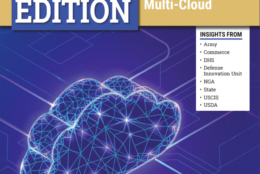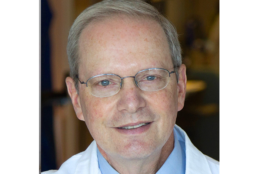SDFM The Business of Defense
-
Across the government, in agencies large and small, IT leaders have launched efforts to use to multi-domain cloud environments to deliver against mission demands. We talk to experts inside and outside government to uncover takeaways in this exclusive ebook.
April 15, 2022 -
Over three afternoons, beginning June 21, Federal News Network will share expert insights and advice on implementing zero trust — as well as detail where agencies are in their move to zero trust and early lessons learned. Register for the event now!
April 15, 2022 -
To meet the Biden administration’s net-zero greenhouse gas emission goals, agencies are looking at ways to make their buildings and vehicles more sustainable both through new and existing initiatives. Learn more now.
April 14, 2022 -
Conversations on Health Care hosts Mark Masselli and Margaret Flinter’s full interview with Dr. Wachter is available now.
April 14, 2022 -
The Government Accountability Office sometimes looks at the big picture. A case in point is its latest study on the big trends that will affect the government. Steve Sanford, the managing director for strategic planning and external liaison at GAO, gives us the run-down.
April 13, 2022 -
Underpinning nearly NASA every activity, you’ll find research. For more, Federal News Network spoke with just two of NASA’s leading researchers, both from its renowned Ames Research Center in Mountain View, California. Dr. Jay Bookbinder is Ames’s associate director for Research and Technology; and Dr. Parimal Kopardekar is the director of the NASA Aeronautics Research Institute, or NARI.
April 12, 2022 -
For decades, cybersecurity meant securing data and endpoints from any number of threats. But what often got left by the wayside was the human element. The shift to zero trust is an acknowledgement of that.
April 12, 2022 -
The National Science Foundation is nearly done deploying four city-scale wireless testbeds at locations across the country, giving researchers a chance to test out a range of radio-frequency innovations in environments ranging from dense urban areas to rural settings.
April 12, 2022 -
A solid identity, credential and access management system is crucial to zero trust and to digital transformation in multicloud environments. Luckily, agencies aren’t starting from scratch, explains Okta’s Sean Frazier at the DoD Cloud Exchange.
April 11, 2022 -
How can the Department of Defense protect networks, systems and data to ensure they're delivering capability to its intended users? Join Tom Temin, Brian Laird of the Naval Supply Systems Command, IBM Federal's Chris Egan and the Center for Internet Security's Curtis Dukes during this exclusive webinar for a discussion of NAVSUP and zero trust.
April 11, 2022 -
Cybersecurity is now an organization requirement and workforce and technology issue for many agencies, especially as cyber threats continue to escalate. Join moderator Tom Temin and Steven Hernandez, chief information security officer at the Department of Education in this exclusive webinar as they discuss zero trust and cybersecurity.
April 11, 2022 -
What is the mission of the U.S. Department of Energy’s Artificial Intelligence and Technology Office? How is it working to transform the Department of Energy into a world leading AI enterprise? Join host Michael Keegan as he explores these questions and more with Pamela Isom, Director of the Artificial Intelligence and Technology Office within the U.S. Department of Energy
April 11, 2022 -
As Defense focuses on strategies for meeting the Biden administration energy and sustainability directive, it’s joined with GSA to seek input from industry on ideas across a range of net-zero energy sources. Read more now.
April 11, 2022 -
A federal agency needed to drastically scale its ability to field incoming calls from the public, and it needed to do so almost immediately. Verizon responded with Natural Language IVR.
April 08, 2022 -
his week on FEDtalk, the panel will discuss the keys to making an event successful and the value of incorporating virtual and hybrid formats.
April 08, 2022















